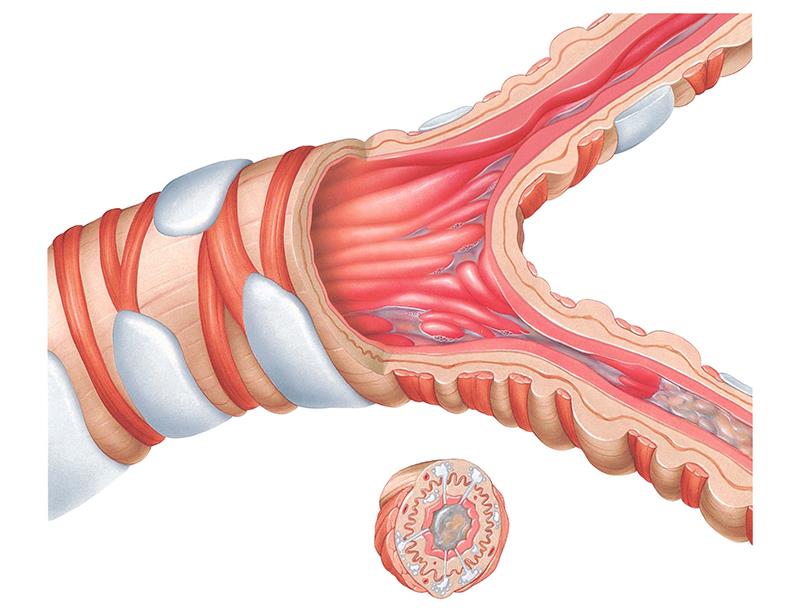Dupilumab reduces mucus plugging, volume in adults with asthma





Treatment with dupilumab reduced airway mucus plug scores and volume in patients with uncontrolled, moderate-to-severe asthma, according to the phase IV VESTIGE trial presented at ERS 2024.
Mucus plugging is recognized as a contributory factor to airway obstruction and symptoms in persistent asthma. [J Allergy Clin Immunol Pract 2023;11:195-199] In addition, airway obstruction caused by mucus plugging has been associated with loss of lung function in patients with asthma, said lead author Prof Celeste Porsbjerg from the Department of Respiratory Medicine at Bispebjerg Hospital, Copenhagen, Denmark.
This phase IV, double-blind, placebo-controlled, VESTIGE trial included 109 patients with uncontrolled, moderate-to-severe asthma who had elevated type 2 biomarkers (baseline blood eosinophil count ≥300 cells/μL and FeNO* level ≥25 parts per billion [ppb]), prebronchodilator (pre-BD) ppFEV1** ≤80 percent, and ≥1 exacerbation prior to randomization. They were randomized in a 2:1 ratio to receive dupilumab 300 mg (n=72; mean age 51 years) or matching placebo (n=37; mean age 49.4 years) every 2 weeks for 24 weeks. Mucus plug scores were assessed using a high-resolution computed tomography scan. [ERS 2024, 2021, abstract OA3649]
At the end of treatment (week 24), patients who received dupilumab had greater reductions in mucus plug scores and volume (least squares [LS] mean difference from baseline, -4.9 points and -0.11 mL, respectively; pnominal<0.001 for both) than those who received placebo.
In addition, 67.3 percent of patients treated with dupilumab achieved a mucus score of <4, defined as low or no burden, compared with 23.3 percent of those treated with placebo at week 24.
When patients were stratified according to inhaled corticosteroid (ICS) use at baseline, those in the dupilumab arm also achieved significantly reduced mucus plug scores, regardless of ICS dosing (LS mean change from baseline, -3.8 vs 1.5 points; pnominal<0.0001 [high dose] and -3.2 vs 0.6 points; pnominal<0.001 [medium dose]), compared with the control arm.
At week 24, among patients receiving dupilumab, reductions in mucus plug scores and volume were associated with lung function, as shown by improvement in pre-BD ppFEV1 from baseline (Pearson’s correlation coefficients, -0.61 and -0.52, respectively; p<0.001 for both).
Notably, there was a strong correlation between mucus scores and lung function. This suggests that if you are able to identify and treat mucus plugging in your patients, you are likely to improve their lung function, said Porsbjerg.
Additionally, more patients on dupilumab achieved a normal FeNO level (<25 ppb) as early as week 4 (56 percent vs 22 percent; odds ratio [OR], 4.0; pnominal<0.001) and was sustained through week 24 (57 percent vs 11 percent; OR, 9.8; pnominal<0.001) than those on placebo.
Based on previous studies, dupilumab improved lung function and reduced severe exacerbation rates in adults and adolescents with moderate-to-severe asthma, Porsbjerg noted.
Further, the present study demonstrated that “dupilumab treatment led to reductions in airway mucus plugging scores, mucus volume, and inflammation, possibly contributing to improved lung function,” she concluded.